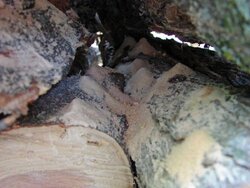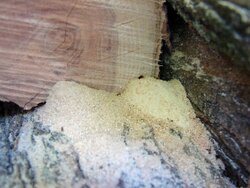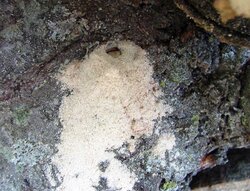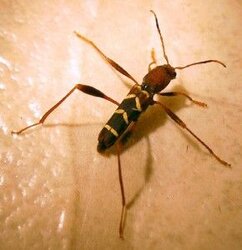Today I went out to check on the progress of the drying process. To my surprise, something is consuming my wood! These little boring bugs, somewhere between the larva and pupa stage (Wikipedia) are really having a party. I have several different types of wood stacked in 12 ft rows with 40 inches of air space between for quick seasoning. All 7 cords of this area has been c/s/s between January and April 1st of this year. Two very interesting observations: 1) damage is visible only in the honey locust; 2) when it'd dead calm (no wind) ....... I can hear them chomping away!
Moral of the story: honey locust may not be lighter only due to a lower moisture content!
Moral of the story: honey locust may not be lighter only due to a lower moisture content!





 In any case, they've yet to consume any significant portion of my firewood, and I always have the satisfaction of sending them into the stove.
In any case, they've yet to consume any significant portion of my firewood, and I always have the satisfaction of sending them into the stove.  I don't do a darned thing about them, whatever they are. Rick
I don't do a darned thing about them, whatever they are. Rick
